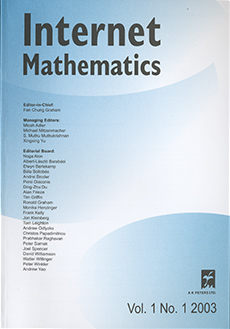Abstract
In recent years, game theory has provided insights into the behavior of distributed systems by modeling the players as utility-maximizing agents. In particular, it has been shown that selfishness causes many systems to perform in a globally suboptimal fashion. Such systems are said to have a large price of anarchy. In this article, we extend this field of research by allowing some players to be malicious rather than selfish. What, we ask, is the impact of malicious players on the system consisting of otherwise selfish players? In particular, we introduce the price of malice as a measure that captures how much the system's efficiency degrades in the presence of malicious players, compared to a purely selfish environment. As a specific example, we analyze the price of malice of a game that models the containment of the spread of viruses. In this game, each player or node can choose whether to install antivirus software. Then, a virus starts from a random node and recursively infects all neighboring nodes that are not inoculated. We establish various results about this game. For instance, we quantify how much the presence of malicious players can deteriorate or---in case of highly risk-averse selfish players---improve the social welfare of the distributed system.
Citation
Thomas Moscibroda. Stefan Schmid. Roger Wattenhofer. "The Price of Malice: A Game-Theoretic Framework for Malicious Behavior." Internet Math. 6 (2) 125 - 156, 2009.
Information




